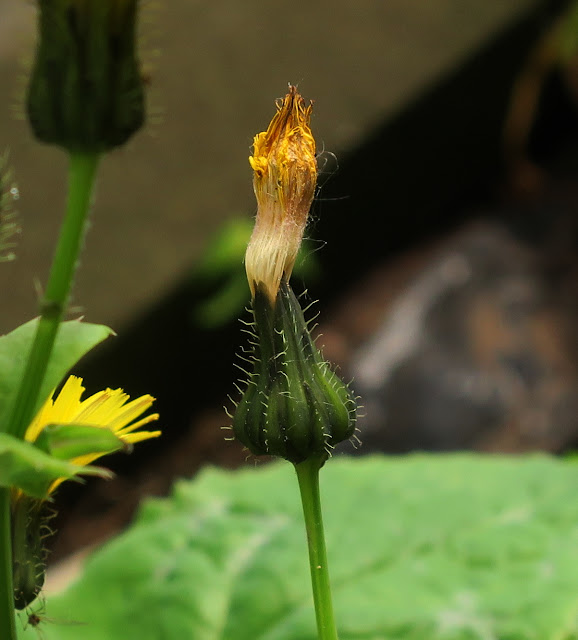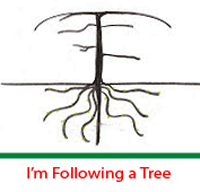 |
| Wasps' Nest. 21st May 2020. About two inches wide and two inches high. |
Mostly, I try to take my breaths of outside air between three and five in the morning. I don't have a garden so I stand in the street. Either side of these times people are about. It's surprising how many. First, those who cannot sleep. Later, from around five-thirty, people walking to work. Some call out 'hello'. Some might stop to talk. Apart from flu (I've had two anti-flu injections) I'm not immune to anything which means I have to be anti-social, Between three and five I choose a few moments to stand there alone.
But sometimes I sleep too long by mistake. Then I have to think. "Would it be better to go a day without air?" Generally speaking, no. Those two minutes outside, holding my arms wide and sucking in ten deep breaths - they set me up for the day. I risk it.
 |
| Looking down into the wasps nest from where it had been joined to a stone lintel. Each layer the same only getting smaller and smaller. |
On one of these rare, going-out-at-the-wrong time mornings (ten to six to be precise so it was already light) I noticed a little structure that had appeared on the lintel of a blocked up cellar doorway near my house. Too near my own front door!
A wasp's nest. At this point it was only two inches in its widest dimensions - but if left alone the wasps would make it bigger.
 |
| Wasps nest with the entrance showing. |
I looked online. Almost everything said only experts should tackle wasps nests. Amateurs might be stung. So I phoned the council. Because of coronovirus, pest control people aren't there. I said "they won't have to come into my house. The nest is in the street!" But that was irrelevant. They just aren't there. They aren't even available to give advice. The woman who answered the phone said to wait for them to be killed by frosts. This flummoxed me. We shouldn't be having frosts till the autumn now - months away. Wasps are quite aggressive near their nests. This one wasn't even two metres from the pavement and it was near a corner so pedestrians could easily come round the edge of the building and walk into a cloud of them. She advised that if I couldn't wait for nature in the form of frosts, I should phone a commercial firm.
I did.
 |
| The very centre of a small wasps' nest after the outer layers have been peeled away. |
A visit from an expert would cost a couple of hundred pounds. Not an option! So after a discussion during which I was given rather better advice (I think) I asked a friend to sort the nest for me. I provided her with a broom and instructions (we are now too far into the morning for me to be out of doors; I feel like some kind of vampire that can't take sunshine!). "Look around carefully," I said. Make sure no wasps are looking. (The expert woman had told me to be sure of this. "They won't like you destroying their nest," she said.) Knock the nest down with one swipe and run inside."
So she did. She said it felt much more substantial than she had expected.
A few days later I asked her to collect it for me. An astonishing opportunity. I could see where the wasps would go in and out. I unpeeled the layers. Several identical layers, each one smaller than the last with quite a substantial empty space between each one; and, in the middle, little capsules with little wasps in. Some capsules were empty. I don't know if this is because eggs had not yet been laid in them or because wasps had already left them or because wasps dropped out of them when the nest fell.
 |
| Baby wasp in its cell in its nest. The orange things are its folded down antennae. |
I peeled back one of the white tissue-papery covers. And there, inside, was a wasp that has never lived. It has never had the chance to come out and buzz around. It's never had the opportunity to sting one of my neighbours. I keep gazing at its picture and think 'I killed this creature'.
I don't regret it. Wasp stings can be incredibly painful. Some people die if they are stung. The woman at the commercial pest control company told me wasps will abandon a broken nest and re-build somewhere else. (Hopefully at a distance from humans!) So by knocking down the nest when it was only small, the loss of wasp-life is kept to the minimum. But . . .
I once went to a talk about Buddhism. There a different kinds of Buddhism so I don't know how representative of Buddhists in general the speaker was. However . . . he said there's a big difference between unthinkingly swatting away a fly to kill it, and killing it thoughtfully and consciously and with a reason. It's one of the things I've thought about and thought about and never got much further with than thinking about it in circles. However, I do think about it - and I do think about the wasps I have caused to die. I will probably always think about them. Not usefully perhaps, but I will think about them frequently and in circles.
 |
| NATIONAL INSECT WEEK 2020 |
Next Monday will be June 1st. I will be joining in the The Wild Life Trusts' '30 Days Wild'. The idea is to do something nature-related every day in June and making a note of it. It might be something wildly scientific or it might be sitting in the sunshine having a cup of tea. Being aware. Looking around . . . matters. My original intention was to post about it on twitter each day . . . but maybe I'll post here too . . . it's getting a bit close and I've yet to decide! Will you be joining in too? You can register for information on this link.








 .
.













